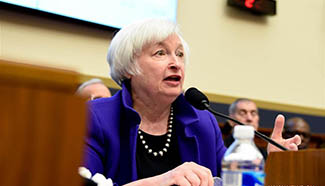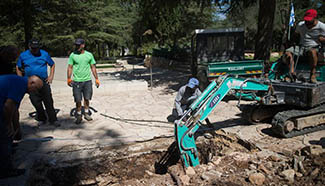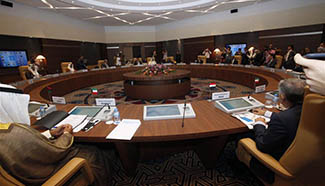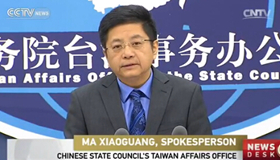By Qian Yongwen, Edna Alcantara and Mao Pengfei
MEXICO CITY, Sept. 28 (Xinhua)-- As the model of building Special Economic Zones (SEZs) has been successful internationally, especially in China, Mexico has decided to learn from China's experience and develop its own SEZs to boost its development.
The goal is to attract investment and generate well-paid jobs across Mexico, said Gerardo Gutierrez Candiani, head of the Federal Authority for the Development of Special Economic Zones (AFDZE), in an interview with Xinhua.
He added that AFDZE's mission is to gain productive investments and convert the chosen areas into industrial and regional development hubs.
On May 31, Mexican President Enrique Pena Nieto enacted the Federal Law for Special Economic Zones.
Gutierrez Candiani said work is currently being carried out using the experience of the SEZ in Shenzhen, China.
"There are many models but Shenzhen is a model that we have within the project that we want to develop. In Shenzhen, people's income has increased 150 times over the past 30 years," said Gutierrez Candiani, believing Shenzhen is the right model for Mexico as it focused on employment and improving the quality of life.
"China has been one of the main promoters of economic zones for the past three or four decades. The industrialization and success of China is also due to public policy which has created very favorable conditions for attracting more investments and creating better jobs. This is all part of what we're trying to do," said Gutierrez Candiani.
SEZs are fixed locations, chosen to present exceptional business environments and paired with business incentives and advanced infrastructure. SEZs usually focus on specific sectors.
Gutierrez Candiani said the priorities for all of Mexico's SEZs are progressively being identified but that they will not compete against each other.
Mexico's first three SEZs, which have been announced, will be located at the port of Lazaro Cardenas, straddling the western states of Michoacan and Guerrero; the Isthmus of Tehuantepec Corridor, across the towns of Coatzacoalcos in Veracruz and Salina Cruz in Oaxaca; and at Port Chiapas in the southern state of Chiapas.
Four more zones are expected to be announced in 2017.
The Lazaro Cardenas SEZ will focus on the automotive, aerospace and agribusiness industries, the Isthmus of Tehuantepec SEZ will focus on the energy, chemical and petrochemical businesses and Port Chiapas will have a heavy oil component.
Three "niche zones" are being finalized, which would support the larger SEZs through human capital and infrastructure. One such zone in Puebla is likely to act as a second and third-level supply base, one in the Yucatan Peninsula will look at innovation, technological development and communications, and the third in the central state of Hidalgo will focus on the textile and design value chain.
"It is about creating opportunities so that people have a more dignified life and Mexico can take the road to progress, equity and justice," emphasized Gutierrez Candiani.
According to the government's forecasts, it is estimated that the creation of these SEZs will generate 115,000 direct jobs in the coming decade.
Linked to these SEZs, the government is planning a major investment of close to 115 billion pesos (5.93 billion U.S. dollars) to upgrade gas pipelines, railways, highways, airports, ports and logistics.
At the start of September during the G20 Summit in Hangzhou, President Pena Nieto and his Chinese counterpart Xi Jinping held a bilateral meeting, in which they agreed to strengthen their business relationship and cooperation in order to further complement the two economies.
Xi proposed drawing up a bilateral cooperation timeline for the next five years in which China could help with Mexico's development of SEZs.
At the end of the 1970s, China's building of SEZs were seen as a needed economic step for its opening-up process.
These zones offered investment incentives to national and foreign companies with an aim to establish modern manufacturing plants and attract foreign capital and technology to speed up growth and export promotion.










